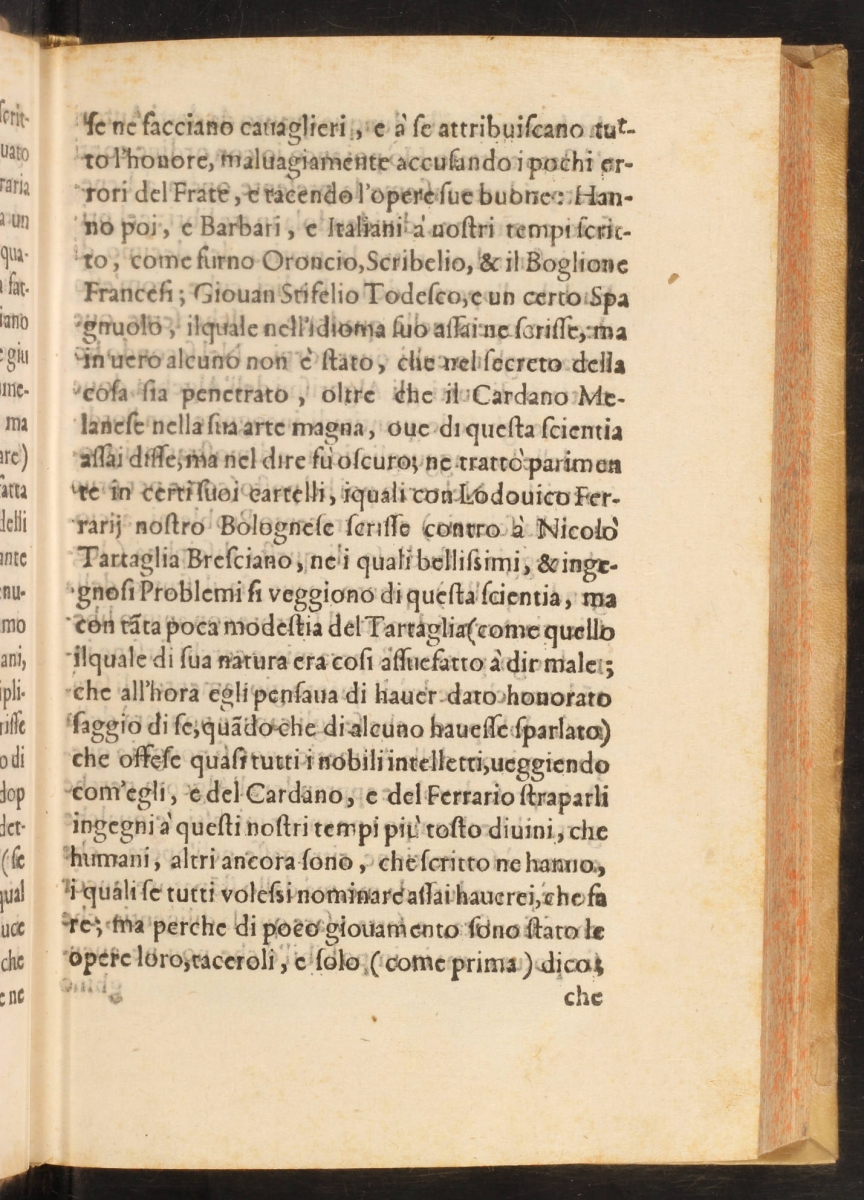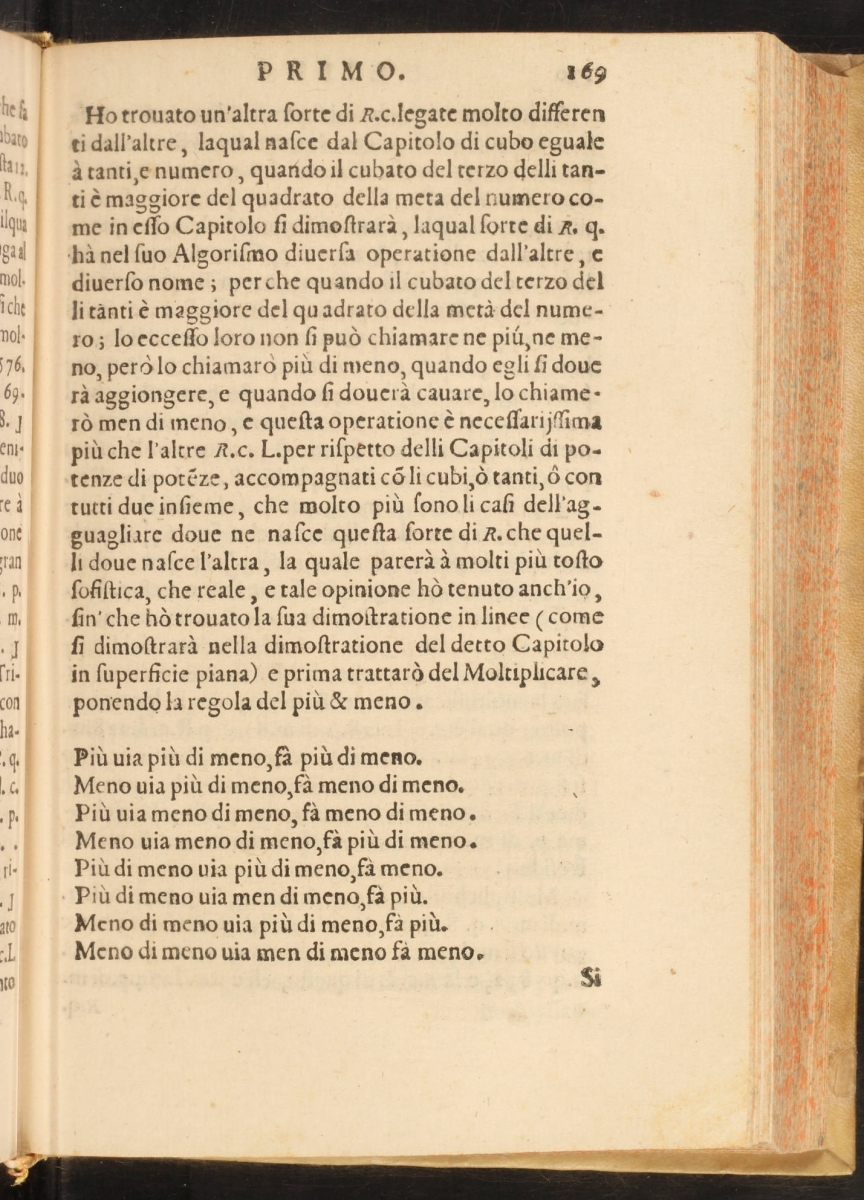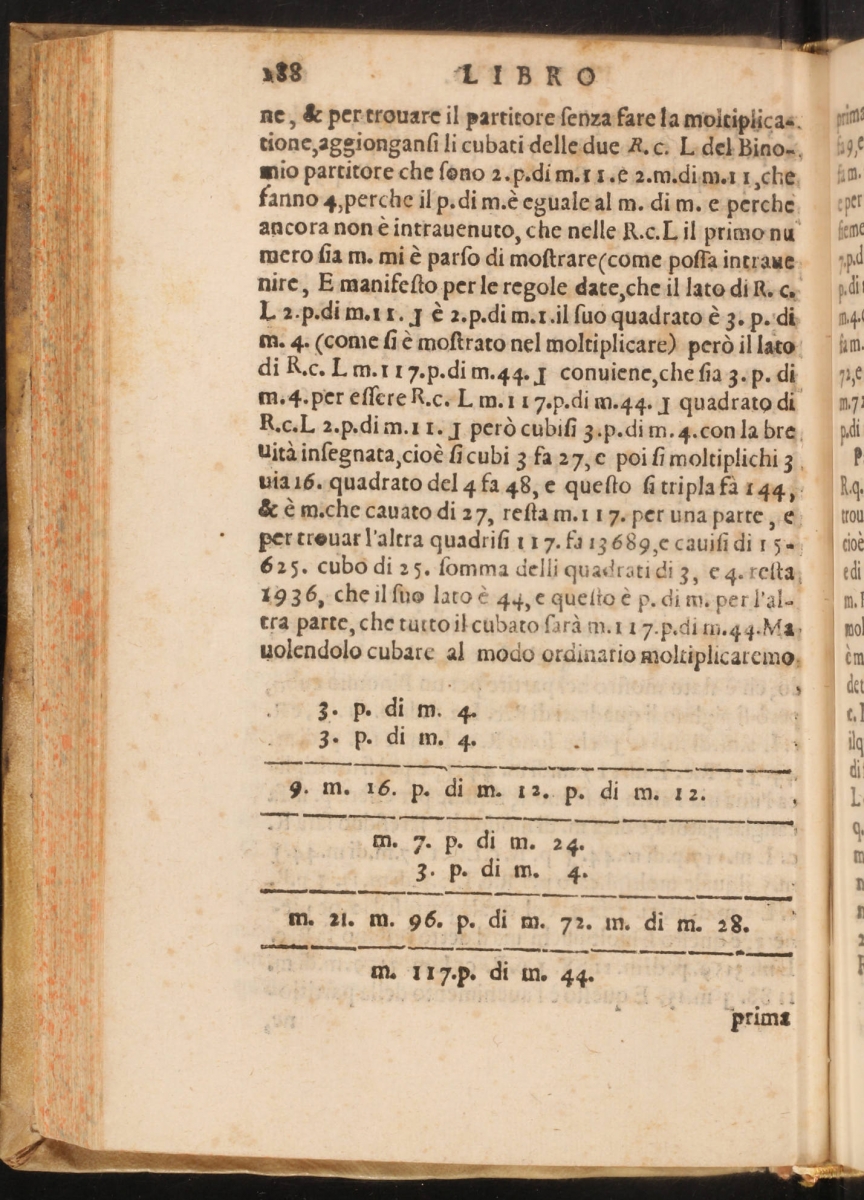- About MAA
- Membership
- MAA Publications
- Periodicals
- Blogs
- MAA Book Series
- MAA Press (an imprint of the AMS)
- MAA Notes
- MAA Reviews
- Mathematical Communication
- Information for Libraries
- Author Resources
- Advertise with MAA
- Meetings
- Competitions
- Programs
- Communities
- MAA Sections
- SIGMAA
- MAA Connect
- Students
- MAA Awards
- Awards Booklets
- Writing Awards
- Teaching Awards
- Service Awards
- Research Awards
- Lecture Awards
- Putnam Competition Individual and Team Winners
- D. E. Shaw Group AMC 8 Awards & Certificates
- Maryam Mirzakhani AMC 10 A Awards & Certificates
- Two Sigma AMC 10 B Awards & Certificates
- Jane Street AMC 12 A Awards & Certificates
- Akamai AMC 12 B Awards & Certificates
- High School Teachers
- News
You are here
Mathematical Treasure: Raphael Bombelli's L'algebra
Rafael Bombelli (1526–1572) was born in Bologna, in what is now Italy. Growing up in this area during the time of the controversy over the solution of cubic equations influenced Bombelli, who decided that a self-contained algebra book, which could be understood by a wide audience, was needed. The result was L'algebra parte maggiore dell’aritmetica divisa in tre libri, first published in 1572. The image below shows the title page of a 1579 edition titled L'algebra: opera di Rafael Bombelli da Bologna. Both editions were in Italian.

The names Cardano, Tartaglia, and Ferrari, important players in the cubic dispute, are mentioned on the fifth page of a section titled “Agli Lettori” or “To the Readers.” For instance, Bombelli praises Cardano's work but calls his writing obscure (oscuro). [See Stedall 2010, page 18 footnote, for a translation of the sentence.]


Above, on page 6, Bombelli explains some of his notation. In the image of page 70 below, Bombelli presents rules for multiplying with signed numbers, along with some examples.

In addition to being a comprehensive presentation of the algebra known at the time, L’algebra contained the first treatment of the arithmetic of complex numbers.

We see at the bottom of page 169 above, Bombelli presented rules for multiplying certain complex numbers. These translate as:
A positive times a positive square root of a negative gives a positive square root of a negative.
A negative times a positive square root of a negative gives a negative square root of a negative.
A positive times a negative square root of a negative gives a negative square root of a negative.
A negative times a negative square root of a negative gives a positive square root of a negative.
A positive square root of a negative times a positive square root of a negative gives a negative.
A positive square root of a negative times a negative square root of a negative gives a positive.
A negative square root of a negative times a positive square root of a negative gives a positive.
A negative square root of a negative times a negative square root of a negative gives a negative.
Below is an image of page 188. At the bottom of the page, Bombelli demonstrates cubing the complex number \( 3 + 4i \), by first squaring it, using distributivity, to get \( -7 + 24i \), which is then multiplied by another factor of \( 3 + 4i \) to yield \( (3 + 4i)^3 = -117 + 44i \).

A complete digital scan of the 1579 edition of Bombelli’s L’algebra is available in the Linda Hall Library Digital Collections. The call number is QA33 .B65 1579. Another copy of the 1579 printing is also available from Convergence.
Images in this article are courtesy of the Linda Hall Library of Science, Engineering & Technology and used with permission. The Linda Hall Library makes available all existing digital images from its collection that are in the public domain to be used for any purpose under the terms of a Creative Commons License CC by 4.0. The Library’s preferred credit line for all use is: “Courtesy of The Linda Hall Library of Science, Engineering & Technology.”
Reference
Stedall, Jacqueline. From Cardano’s great art to Lagrange’s reflections: filling a gap in the history of algebra. European Mathematical Society, 2010, pp. 17–19, 211.
Cynthia J. Huffman (Pittsburg State University), "Mathematical Treasure: Raphael Bombelli's L'algebra," Convergence (December 2019)




